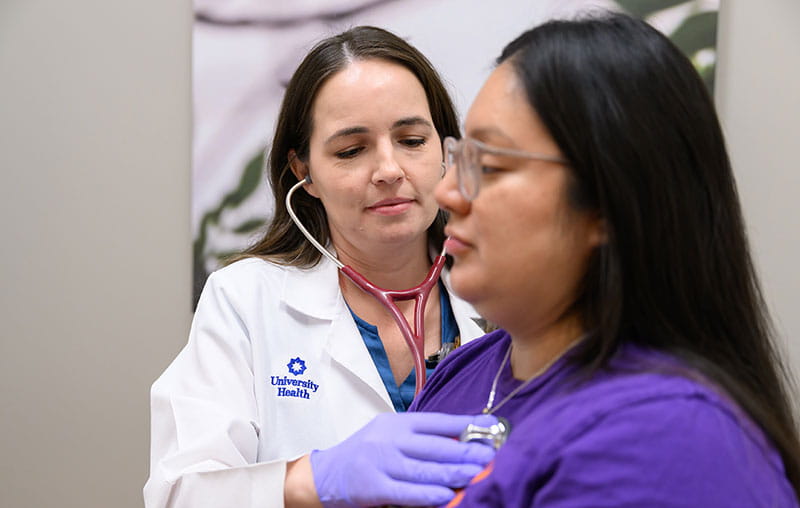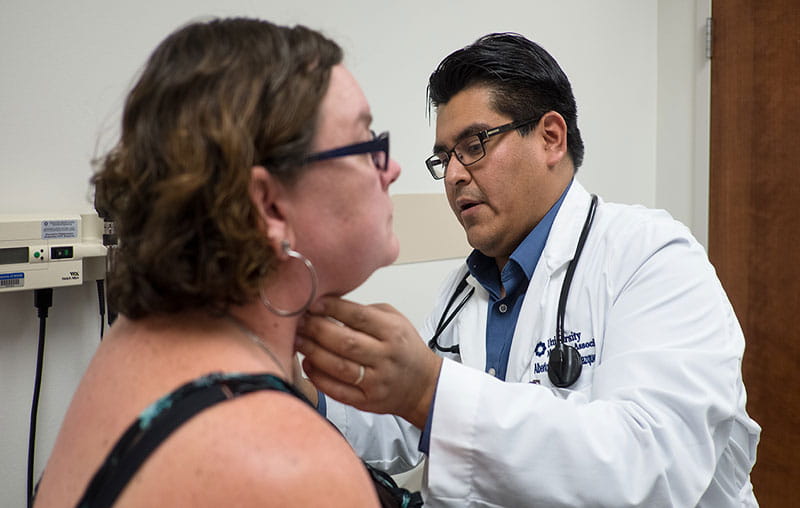Bhoja Katipally - Everyday Extraordinary
ExpressMed overcame many hurdles to keep patients and staff safe
As the first department to go live in University Health’s transition to a new electronic medical records (EMR) system, ExpressMed employees were already braced for a challenging summer. The changeover would be a difficult undertaking.
But add a global pandemic to the mix, when dozens of COVID-19 patients were walking through the clinic doors every day—handling that was something extraordinary.
The changeover to a new EMR was supposed to occur in May, but the coronavirus derailed that plan. Instead, the transition was pushed to July—before anyone realized it would be about the same time the summer surge of cases spread throughout San Antonio.
“There was a big spike in June after restrictions were relaxed,” said Dr. Bhoja Katipally, the medical director for ExpressMed. “Every day we were testing 100 to 150 patients, and out of those, 60 to 70 came up positive. Yet no one hesitated to face the challenge. They stepped up with the courage and commitment.”
‘A Huge Mental Tax’
With dozens of COVID-19 patients coming through their doors daily and protocols changing rapidly—and adopting an entirely new electronic medical records system—staying both safe and sane was a delicate balance.
“This was not something anyone would formally train for,” Dr. Katipally said. “They know the principles of infection control and how to manage infectious diseases, but no one was prepared for the magnitude and intensity of a pandemic.”
ExpressMed staff reassigned as many patients as possible to telemedicine visits, leaving only about 50 patients a day entering the clinics to see a doctor in person. Anyone with symptoms of COVID-19 was quickly isolated, and only one or two doctors were assigned to the Red Team to treat those cases each day.
“This scheduling model gave those providers a chance to prepare themselves both physically and mentally to see the potential COVID patients,” Dr. Katipally said. “Scheduling was challenging because we couldn’t put the same provider on the COVID-19 track every day. Emotionally, it added a huge mental tax. It was scary to go home at night; I slept in my own separate room for months as a precaution in case I had contracted COVID.”
Socially Distant Solutions
In the beginning, the clinics could barely keep up with symptomatic patients needing to be isolated. Social distancing regulations drastically cut down on lobby capacity. Thoroughly cleaning the rooms—which took more than an hour to be ready for the next patient—created unavoidable bottlenecks.
To reduce the amount of foot traffic into the building, clinics quickly implemented nurse visits where patients could get swabbed for testing and then immediately leave. The five-minute nurse visit kept both patients and staff safer than bringing people inside for a long visit with higher levels of exposure. To minimize contact with isolated patients in the clinic, providers interviewed them by phone before entering the rooms.
A Professional Commitment
“Day after day, week after week for months, people really showed their commitment to their profession,” Dr. Katipally said. “Every single employee on the team—from registration to the nursing staff to physicians and advanced practice providers—did a tremendous job at every level during this pandemic. They are the true heroes of our University Health.”




